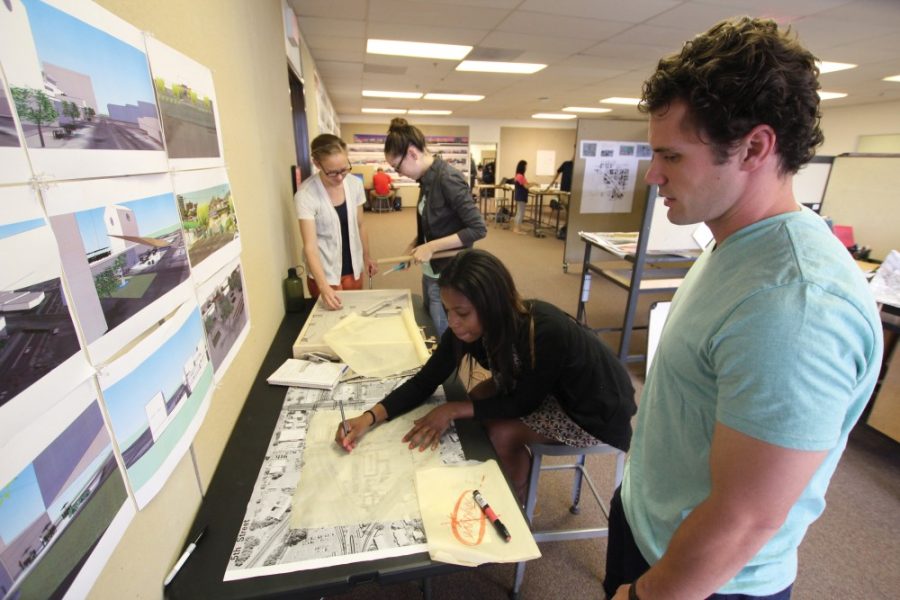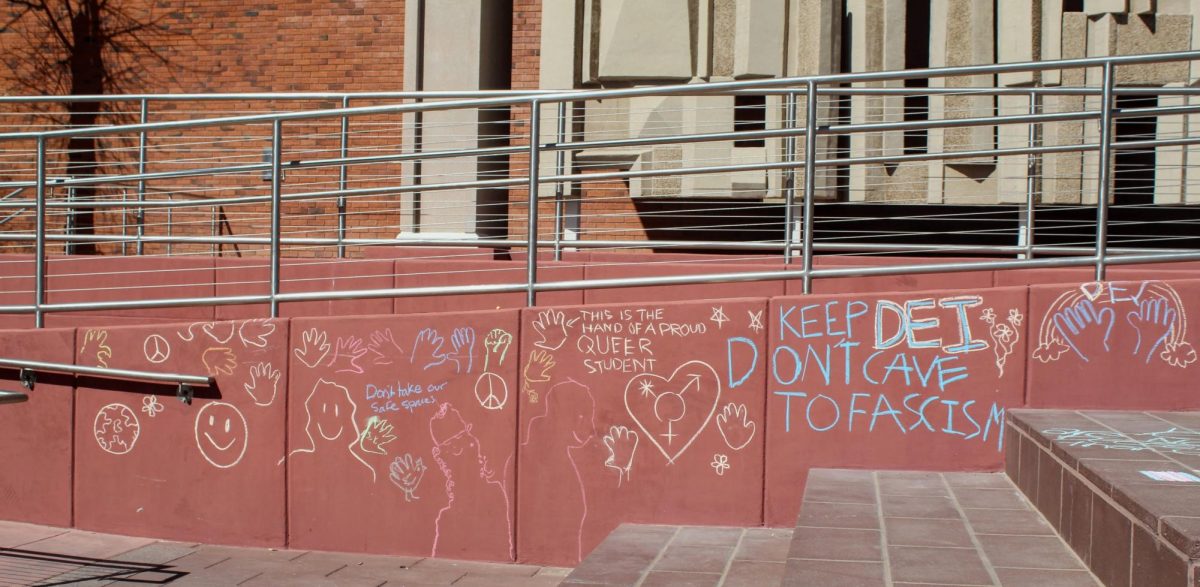Students will be key in growing downtown Tucson, say UA leaders and city officials, who are working together to increase housing and employment opportunities and expand UA programs in the area.
Janice Cervelli, dean of the College of Architecture, Planning and Landscape Architecture, and Bob Smith, vice president for business affairs, are leading the downtown discussion for the UA. Cervelli and Smith have been looking into the possibilities of bringing programs within various colleges as well as research opportunities to downtown.
“The idea is to create a partnership between the university and the city whereby the city benefits from the expertise of our faculty and our students,” Cervelli said, “and our students and faculty gain experience by working for the city and the county.”
Engaging students in planning
Students are being encouraged to play a direct role in forming some of the UA’s downtown plans.
In 2011, the university opened UA Downtown, housed in the Roy Place Building at Stone Avenue and Pennington Street. A U of A Bookstore and the School of Government and Public Policy’s master’s program in public administration are housed there, in addition to the Drachman Institute, a community outreach arm of CAPLA.
CAPLA students are working in three studios in UA Downtown, said Marilyn Robinson, associate director of the Drachman Institute. The students are looking at planning and concepts for downtown development.
Students will meet with city officials and business owners to present their work, Robinson said.
“It’s a learning opportunity for the students to learn how to approach planning and design issues in an urban area,” Robinson said. “We think that … the students present their work to stakeholders in the hopes that there may be something there that can actually come to materialize.”
More opportunities for students
Jonathan Rothschild, mayor of Tucson and the Tucson City Council is working with heads of various departments in city government to identify where students can assist in research and theoretical work, in an effort to expand research and internship opportunities for students.
Between six and eight departments, including the city manager’s office, the Parks and Recreation Department and the Tucson Department of Transportation, have submitted job descriptions for student internships to the UA.
The internships vary from clerical work in an office to webpage design, cleaning parks and geographic information system’s mapping. Students working in the city manager’s office would help sort out opinions and ideas regarding international trade, especially with Mexico.
The director of human resources sent the job descriptions to Paul Melendez, a professor in the UA Eller College of Management, about a month ago. Melendez is now working on finding the appropriate areas of expertise in various UA departments.
“We have to kind of expand the network so that it not only includes Eller but it also includes other strategic schools and areas so that we can make sure we cover all these different needs,” Melendez said.
Melendez said he hopes to find students to fill these internship positions, most of which are three to six months long, for the fall 2013 and spring 2014 semesters.
The city is also working on an initiative with David Allen, executive director of Tech Launch Arizona, a UA program that helps market student ideas.
The city will provide an independent contractor to help the university get UA students’ inventions and technologies into Tucson business. The city has committed $100,000 toward the project and is waiting for the UA to formally agree to the initiative, Rothschild said.
“Basically the idea is how do we get that intellectual property out of the university and into the community and into a business,” Rothschild said.
Ensuring a positive relationship
Steve Kozachik, councilman for Ward 6, has hosted meetings between business owners, residents, and the managers and owners of a student housing complex set to open in August, to discuss concerns over students living in downtown.
“I’m … optimistically expecting it to have a different sort of outcome than what The District had to begin with,” Kozachik said.
The District on 5th Avenue, a student housing complex that opened in August 2012 near Sixth Street and Fifth Avenue, has come under fire by neighborhood residents due to excessive noise and partying.
The builder of The Cadence, a privately owned student housing complex located downtown, is local, Kozachik said, and he understands the challenges of student housing in an urban area.
“He’s not some guy who’s back in Chicago who doesn’t care about the community,” Kozachik said. “He wants to make this relationship work.”
Although Curtis McCrary, executive director and general manager of the Rialto Theatre Foundation, did not attend any of the early meetings held by Kozachik before construction began, McCrary said he believes The Cadence’s builder will be cooperative in addressing neighhborhood concerns.
The owners of The Cadence and McCrary have formed an arrangement that will enable Cadence residents to receive a membership to the Rialto, and The Cadence will promote the Rialto, McCrary added.
McCrary said he’s not worried about students living in downtown, next to the Rialto. Unlike the West University Neighborhood, where The District on 5th is located, the downtown area is more commercial than residential.
“I think that the various developers that are putting in new student housing probably learned from the things that happened at The District,” McCrary said. “I don’t see that as being a big problem for downtown.”
The transition of students living in downtown will require some learning and adjustments, but will ultimately be a good one, said Cervelli, who also serves as the chair of the Downtown Tucson Partnership this year. Downtown Tucson Partnership serves as the liason between businesses in
downtown and city of Tucson officials.
“It’s not a very big downtown,” Cervelli said. “When you’re adding 500 or 600 new people that will be living there, that’s a considerable impact.”









